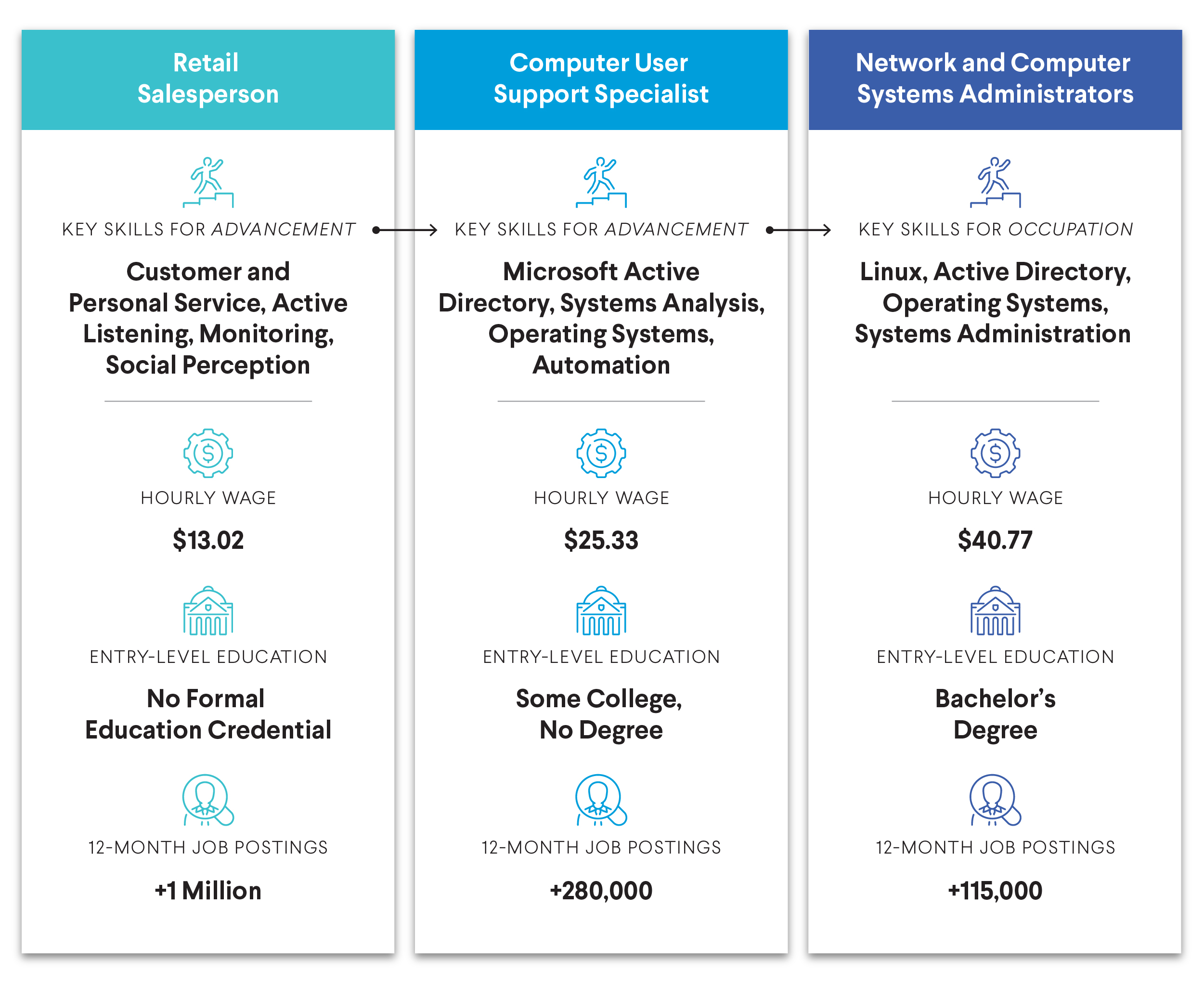
The Hidden Employment Crisis Facing Young Adults
November 30, 2021
At a Glance
Young people are rejoining the labor market, but still face basic needs insecurity. JFF offers four new strategies to connect with high-wage, high-growth opportunities.
In 2021, we witnessed a troubling trend for young people who reside in low-income communities: Although the economy opened up and young people started rejoining the labor market, they are now concentrated in low-wage jobs with few opportunities for advancement.
Meanwhile, in the field of young-adult talent development, the community-based organizations (CBOs) that have long been a lifeline for unemployed and out-of-school youth are figuring out how to navigate an unpredictable and rapidly changing labor market.
In JFF’s new report How Young Adults Can Advance in a Turbulent Economy, Sara Lamback, Laura Roberts, and I identify four strategies and give clear guidance for each strategy to help young-adult talent developers position their participants for success:
- Use up-to-the-minute labor market data to target high-wage, high-growth jobs in your region.
- Design career pathways based on transferable skills rather than long periods of education or training.
- Improve relationships with employer partners.
- Advocate for public policies that support the economic advancement of young adults.
Throughout the report, we explore the most recent data on young adult hiring and examine a few key questions: In which sectors are young adults being hired? What jobs will pay off in the current economy? How can young-adult talent developers help young adults leapfrog from low-wage work into higher-paying jobs with advancement potential?
We learned that millions of young adults who found work in 2021 landed jobs that don’t cover their basic needs. This is a crisis for these young people, who too often lack pathways to advancement, and for society as a whole, which risks producing a generation of underprepared young people. The strategies outlined in the report offer an opportunity to disrupt this trend and connect more young people with high-wage, high-growth employment options.
How can young-adult talent developers help them leapfrog from low-wage work into higher-paying jobs with advancement potential?
A New Approach to Understanding the Labor Market
Now more than ever, it is critical for young-adult talent developers to use up-to-the-minute labor market data to identify promising high-growth jobs in their regions. Lamback identified 15 high-potential job occupations that the most recent data suggest are growing, pay median wages of at least $20 per hour, are accessible to young adults with little experience and education, and meet a number of other important metrics.

The metrics she identified can serve as a template for local CBOs to conduct their own labor market analyses—which is especially important given the variability in how the recession affected people in different regions. Communities that were heavily reliant on hospitality, for example, fared worse than those that relied on transportation, distribution, and logistics.
Given the rapid changes in the labor market, we suggest that young-adult talent developers vet their findings with local employers to ensure that their labor market information is current and correct for their regions.
Working young adults are developing foundational skills that can be transferable to a range of new occupations.
Creating Skill Maps from Low-Wage Jobs to Those with Advancement Potential
Once they’ve identified promising occupations in the region, how do young-adult talent developers help young people transition into those jobs? We recommend a slightly different approach to designing career pathways than the traditional method of building skills for specific jobs. Instead, we suggest talent developers focus on supporting long-term skill development by identifying foundational and transferable skills that work across industries and can enable progression to higher-paying, higher-skill roles over time.
Working young adults are developing foundational skills that can be transferable to a range of new occupations. At the same time, more promising occupations may require additional foundational skills and specialized skills for the new occupation. We provide an example for mapping skills from retail salesperson to computer user support specialist to network and computer systems administrator in the infographic above. Creating maps like this can help talent developers guide young people who are currently employed into training programs that deliver the necessary skills for advancement; they can also help talent developers determine what training to offer for cohorts of young people.
We will be holding a webinar on Thursday, January 13, 2022, from 11:30-1 pm ET to walk you through our findings and dig more deeply into the steps that CBOs and other young-adult talent developers can take to position their participants for success. To register, contact Sandra Jadotte at sjadotte@jff.org.
Related Content

How Young Adults Can Advance in a Turbulent Economy
Millions of young adults who lost jobs in the pandemic are still either unemployed or working in low-wage jobs that don’t cover their basic needs. This report highlights four strategies to guide talent developers to…

Talent for the Future
Juan left high school and became homeless. But he has skills and drive and found a Back on Track program to help him prepare for a career in IT. JFF helps employers leverage an untapped…